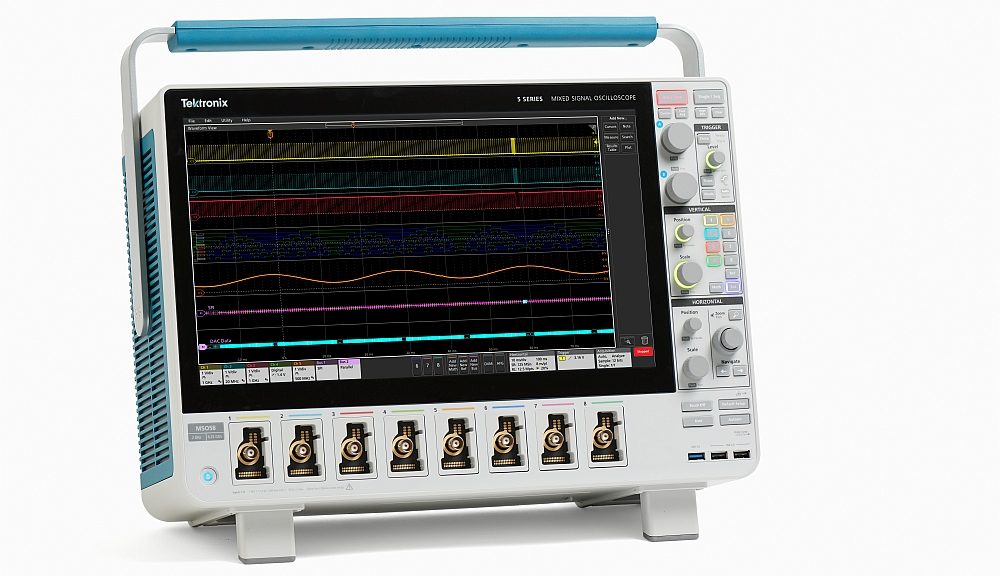- Tektronix’s MSO Series 5 oscilloscopes, launched in June 2017, are characterized by their flexibility in the choice of the number of analog and digital channels.
- This flexibility, combined with other features, enabled these instruments to win no less than four awards in 2017: the UBM ACE Award, the Elektra Award and the Product of the Year.
Tektronix’s MSO Series 5 oscilloscopes won the UBM ACE Award 2017 (Annual Creativity in Electronics) in the Ultimate Awards category, test and measurement boards and systems.
The MSO Series 5 series is also one of the 100 products of the year selected by EDN, which also includes 27 electronic test and measurement instruments.
The MSO Series 5 series has been named Product of the Year 2017 in the Test & Measurement category by the editors of Electronic Products, a publication for electronic design engineers. Eleven other products, components and other integrated circuits received this distinction in other categories.
The MSO Series 5 oscilloscopes won the Elektra 2017 Test Product of the Year award at the European Electronics Industry Awards ceremony held on 6 December in London. The Elektra Awards recognize the achievements of individuals and companies. Their objective is to promote best practices in technological innovation, sales and employee motivation strategies. The MSO Series 5 family of oscilloscopes won this award over five other finalists:
- Anritsu Spectrum Master MS2760A ultraportable spectrum analyzers covering the millimetre frequency range in the E-band.
- Keysight X Series N9041B UXA Signal Analyzer
- Peratech FR Series Force Resistance Tester
- Rohde & Schwarz RTB2000 entry-level oscilloscope
- XJTAG DFT Assistant, interface to identify testability problems upstream. Zuken’s XJTAG DFT Assistant interface for CR-8000 Design Gateway enables the detection and correction of JTAG errors on electronic boards at the design stage to validate the correct implementation of boundary-scan strings.






